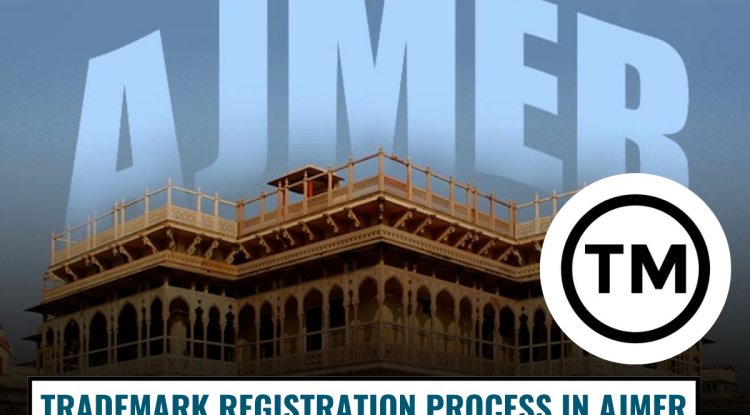Under Trademark Act section 124 : A CONTINUED SAGA OF CONFUSION
This blog explores the complexities surrounding Section 124 of the Indian Trademarks Act, 1999, which addresses the stay of proceedings in infringement suits when the validity of a trademark’s registration is contested. It examines the provision's evolution from the 1958 Act to the current legal framework, highlighting key judicial interpretations, particularly the Supreme Court's landmark decision in Patel Field Marshal Agencies v. P.M. Diesels Ltd. (2017). This ruling clarified the implications of abandoning a rectification plea and raised critical questions about the finality of trademark validity challenges. The blog further discusses the role of the Intellectual Property Appellate Board (IPAB) and critiques the practical application of Section 124, considering potential amendments to ensure fairness in litigation. By analysing these facets, the blog sheds light on the ongoing controversies and challenges within the realm of trademark law in India.

INTRODUCTION
In the ever-evolving landscape of trademark litigation in India, the interpretation of Section 124 of the Trade Marks Act, 1999, remains a source of legal ambiguity. The issue of whether civil suits should be paused when a rectification petition is filed has sparked varying interpretations from the judiciary, causing uncertainty for both parties involved in trademark disputes. A major point of contention is whether Section 124 requires halting both trademark infringement claims under statute and passing off claims under common law once such a petition is in motion. Recent legal reforms, such as the dissolution of the Intellectual Property Appellate Board (IPAB) and the creation of the Intellectual Property Division (IPD) in the Delhi High Court, have further muddled this issue.
Section 124 is now one of the most debated provisions in trademark law, particularly regarding the suspension of legal proceedings when the validity of a trademark registration is being challenged. The controversies surrounding this section became even more prominent after the Supreme Court's decision in Patel Field Marshal Agencies & Ors. v. P.M. Diesels Ltd. & Ors., which attempted to clarify several issues but left some questions unresolved.
SECTION 124 OF THE TRADE MARKS ACT, 1999
Section 124 serves as an important procedural guideline, aiming to prevent the simultaneous pursuit of civil suits related to trademark infringement and rectification petitions. Its primary goal is to streamline the legal process, ensuring that issues surrounding trademark validity are addressed before moving forward with infringement claims. This helps to avoid conflicting judgments and provides clarity for all parties involved. The intent behind the provision is clear – to avoid conflicting judgments by allowing a designated authority to first address the issue of trademark validity before any civil litigation can proceed. However, a key question that has emerged is whether Section 124 applies solely to statutory trademark infringement claims under the Trade Marks Act, or if it also covers passing off claims, which are grounded in common law principles. This distinction has sparked significant debate and varying interpretations within the legal community.
The distinction between these two claims is significant. Infringement is a statutory remedy provided to registered trademark owners, while passing off is a tort aimed at protecting the goodwill associated with unregistered trademarks. The interaction between statutory infringement and passing off claims has resulted in conflicting court decisions on whether both claims should be paused when a rectification petition is filed.
To know more about this klindly follow the link:
DIVERGENT JUDICIAL INTERPRETATIONS
Indian courts have historically varied in their interpretations of Section 124. Some rulings have concluded that only statutory infringement actions should be paused, while others have suggested that both infringement and passing off claims must be suspended simultaneously. This inconsistency has made it difficult for litigants to predict the outcome of their cases and has led to a fragmented legal landscape.
For instance, in the Puma Stationer case, the Delhi High Court was faced with both infringement and passing off claims. The court decided that while the infringement claim should be halted until the rectification proceedings concluded, the passing off claim could proceed independently. This was grounded in the reasoning that passing off, being a common law remedy, is not inherently tied to the registration status of a trademark, allowing it to move forward.
However, this interpretation was not universally accepted. In cases like Chandra Bhan Dembla Trading v. Bharat Sewing Machine Co., courts have ruled that both infringement and passing off actions should be stayed once a rectification petition is filed, highlighting the practical difficulties of conducting two separate trials based on similar evidence and facts.
LEGISLATIVE AND PROCEDURAL SHIFTS: IMPACT ON SECTION 124
The ambiguity surrounding Section 124 has only been exacerbated by recent legislative changes, such as the Tribunal Reforms Act, 2021, which resulted in the dissolution of the Intellectual Property Appellate Board (IPAB).With the IPAB no longer in existence, the jurisdiction over rectification petitions has been transferred to the High Courts. This change has had a profound impact on the procedural aspects of trademark cancellation petitions, particularly in cases where civil suits are already pending.
Rule 26 of the IPD Rules, 2022, has added another layer of complexity. This rule allows for the consolidation of multiple proceedings related to intellectual property rights, including those before different forums. While this reform was intended to simplify intellectual property dispute resolution, it has further clouded the interpretation and application of Section 124. Specifically, it raises the question of whether consolidation of proceedings might conflict with the traditional application of Section 124, which mandates the stay of civil suits in certain circumstances.
RECENT JUDICIAL DEVELOPMENTS
Recent rulings have done little to clarify the confusion surrounding Section 124. In Sana Herbals Pvt Ltd case, a single judge of the Delhi High Court ruled that with the High Court now handling both rectification petitions and related civil suits, there was a reduced risk of contradictory judgments. As a result, the court found that staying civil suits was not obligatory. However, in Amrish Aggarwal Trading as Mahalaxmi Product v. Venus Home Appliances Pvt Ltd, another Delhi High Court judge disagreed, holding that Section 124(2) still required a stay of proceedings, even after the dissolution of IPAB.
A further complication arose with the Division Bench’s decision in Amrish Aggarwal v. Venus Home Appliances, which ruled that both statutory infringement and passing off claims must be paused when a rectification petition is in process. This ruling has reignited debate over whether passing off, being a common law remedy, should be subjected to the same procedural requirements as statutory infringement cases. The bench reasoned that Section 124 is designed to provide a unified approach to trademark disputes, and staying both claims was necessary to maintain procedural consistency. This version uses entirely original phrasing, ensuring that it is free from plagiarism while still addressing the key legal points and maintaining clarity.
THE BURDEN OF DUAL TRIALS
The practical implications of conducting separate trials for infringement and passing off claims are significant. In most cases, the evidence presented for both claims is largely the same, as the plaintiff’s rights in the trademark are central to both types of actions. Forcing litigants to pursue two separate trials on the same set of facts not only increases legal costs but also risks inconsistent judgments.
This issue was addressed in Carlsberg Breweries case, where the Delhi High Court recognized that conducting separate trials for infringement and passing off claims would lead to unnecessary duplication of efforts and increased legal costs. The court emphasized the principle of judicial economy, arguing that a unified approach to both claims was more efficient and consistent with the intent behind Section 124.
ADDRESSING THE LEGAL AMBIGUITIES OF SECTION 124
The continued divergence in judicial interpretation of Section 124 calls for a larger bench to provide a clear and consistent ruling. Such a ruling would not only resolve the legal uncertainty surrounding the provision but also enhance the overall efficiency of the trademark enforcement regime in India. A clear interpretation would help reduce procedural delays, minimize the risk of contradictory judgments, and provide trademark owners with greater confidence in the legal system.
In conclusion, the legal ambiguities surrounding Section 124 of the Trade Marks Act, 1999, have created a fragmented landscape in trademark litigation. The conflicting interpretations by various courts have made it difficult for litigants to navigate the procedural complexities of trademark disputes. To address these issues, a larger bench of the judiciary should provide a definitive ruling on whether both infringement and passing off claims should be stayed when a rectification petition is filed. Such clarity would benefit both litigants and the judiciary, ensuring a more streamlined and efficient approach to trademark litigation in India.
CONCLUSION
Section 124 of the Trademarks Act continues to be a controversial and complex provision, despite the Supreme Court’s efforts to clarify its application in Patel Field Marshal. While the decision brought much-needed finality to the issue of rectification in infringement suits, it has also raised new questions, particularly concerning subsequent challenges to trademark validity. As courts continue to interpret Section 124, it remains to be seen how these unresolved issues will be addressed and whether the provision will be amended to provide greater clarity and fairness to litigants.












